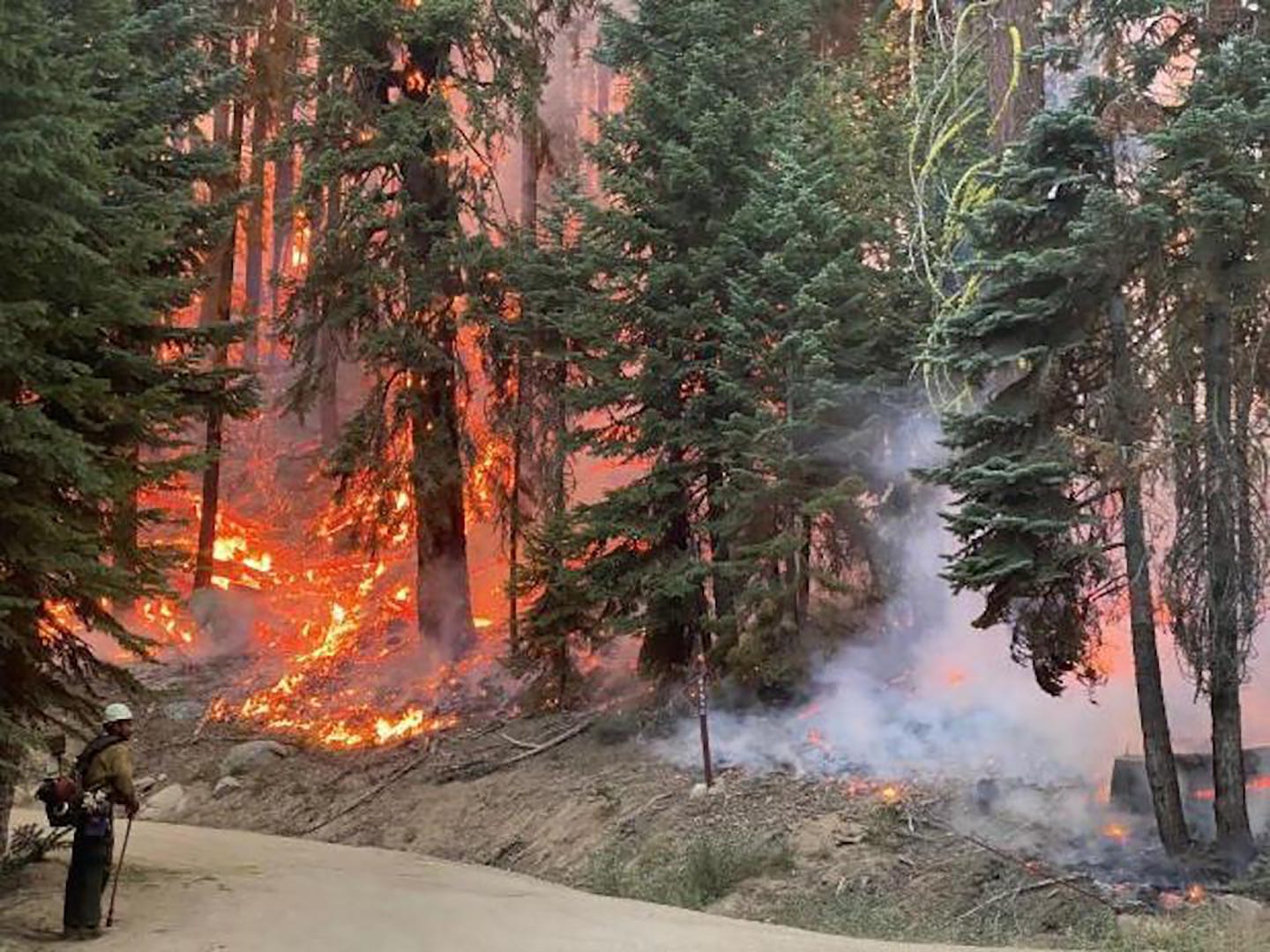Wildfire planning underway in California
Vegetation will eventually dry out and temperatures will rise
An image from the 2020 SQF Complex Fire. — USFS
YES, JUST AS THE SIERRA NEVADA is still under assault from snowstorms, officials are preparing for the next great unknown — the 2023 California wildfire season.
From CalFire’s 2023 Fire Year Outlook published for the four-month period beginning in March: “Weather outlook for March to June calls for mixed temperature & precipitation anomalies with timely moisture intrusions for the rest of this winter and less certainty for the spring. Several northerly wind events are expected during March. Critically dry fuel moisture alignments are not likely to be reached for any great length of time or over a larger area during the four-month outlook.”
The agency nailed it by predicting “precipitation anomalies.” And with snow still falling — and lots more to melt once temperatures rise — it’s a pretty good bet that the areas where giant sequoia grow will remain wet at least through June.
But vegetation will eventually dry out, temperatures will rise, and plenty of planning is underway — from efforts to hire staff to legislative review.
The subject matter is a little dry for most folks, but in Sacramento on March 28, the Senate Governmental Organization Committee held an information hearing with the topic — “Building Resilience: Evaluating California's Recent Wildfire Emergency Preparedness and Response Efforts.” You can watch the hearing HERE and read a news release HERE.
Senator Bill Dodd (D-Napa) said “despite all this rain, we all know how devastating wildfires can be” and that although the rain was needed, it also is bringing life back (to vegetation) to fuel future fires.
One of the purposes of the hearing, he said, was to look back at policy and budget allocations as the climate continues to change and wildfires range.
CalFire, the Office of Emergency Services and Legislative Analyst office were among agencies making presentations at the hearing.
Although CalFire is the lead state agency concerned with wildfire, more than 45 percent of land in the state is owned by federal agencies, including the National Park Service, Forest Service and Bureau of Land Management. And those federal stewardships are even more prominent in the Sierra Nevada.
The state and federal governments work together through a standardized emergency management system when wildfires can’t be put down immediately.
And on the federal level, in January, the Forest Service provided more information about its continuing wildfire strategy, including this VIDEO.
California was fortunate that wildfires in 2022 were less destructive than in some previous years. Still, a total of 7,667 fires were recorded, totaling nearly 364,000 acres. And the fires killed 9 people, destroyed at least 770 structures and damaged others.
As reflected by the state Senate hearing on March 28, California lawmakers are looking at how funds are allocated and if changes are needed to laws to allow agencies to function better. — Claudia Elliott




